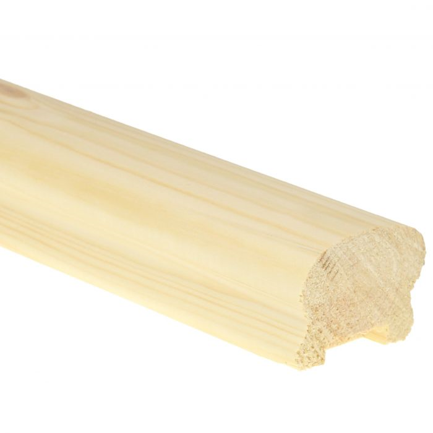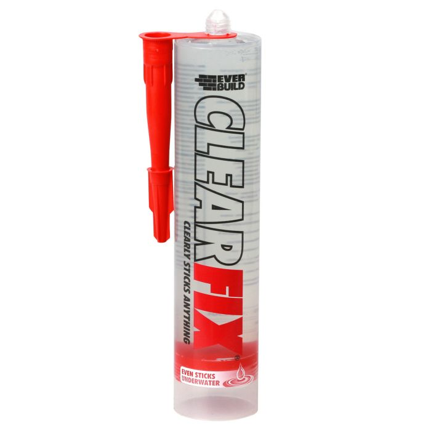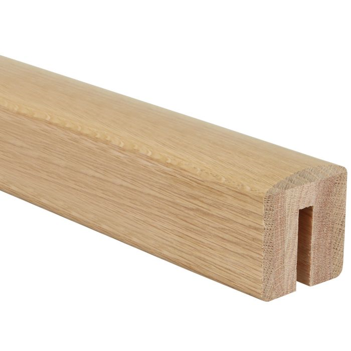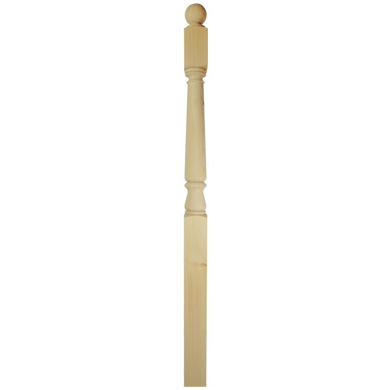Handrails for Stairs Frequently Asked Questions
What is the building code for the standard height of a handrail?
In a domestic property the top of the handrail must be no lower than 900mm from the nosing of the stair tread to the top of the handrail. The 900mm height also applies to landings.
Read our guide What height should a staircase handrail be? to find out more about handrail height regulations.
What is a fillet on a handrail?
A fillet (or in-fill) is a small piece of wood that’s inserted into the underside of a grooved handrail between the spindles. The purpose of the fillets is to conceal the top of the spindles, whilst giving the appearance that there is no groove on the handrail.
What is a grooved handrail?
A grooved handrail has a hollowed out groove on the underside which allows for a spindle of the same width as the groove to be inserted. Once the spindles are in place, the gap between the spindles can then be filled using an infill strip, which is cut to size to fit the spaces, giving the appearance that there is no groove in the handrail.

A grooved pine cottage loaf handrail. You can view this product here.
Some handrails have a slot rather than a groove. A handrail with a slot allows for glass to be fitted into the slot rather than a spindle. Slotted handrails come with infill, whilst silicone can be bought separately to secure either the glass or spindles in place.

Clear Fix hybrid polymer grab adhesive can bond most things in interior and exterior applications. You can view this product here.

An oak grooved handrail for glass. You can view this product here.
Is a handrail required beside every step on a staircase?
Building regulations stipulate that it is not necessary for there to be a handrail for the bottom two steps of a stairway.
How high should a stair handrail be mounted?
Wall mounted handrails share the same height regulations as balustrades, which is a minimum height of 900mm. You can read more about handrail height regulations with our guide What height should a staircase handrail be?
What is the minimum height of a handrail?
The minimum height for a handrail is 900mm, measured upwards from the nosing on the stair tread.
What is a banister on a staircase?
A banister is another name for a balustrade, which is the collective term for the handrail, newel post, spindles and base rail that enclose the open side of a staircase and create a supporting rail to hold on to.
What is a newel post on a staircase?
A newel post is the upright post sitting at the top and/or bottom of the balustrade to support a staircase banister and secure the balustrade. They are essential for giving a balustrade structure and strength. Newel posts also offer an opportunity to add decorative touch to a stairway. You can read more about the different types of newel posts in our guide Your complete guide to stair newel posts.

A pine complete newel post. You can view this product here
What is a balustrade and what is a handrail?
A balustrade is the collective name for the handrail, spindles, newel post and base rail. A handrail is simply the rail that runs along the top of the spindles. Handrails can also be attached to the wall as a stand-alone fitting, these are known as wall-mounted handrails.
How high does a banister need to be?
The height to the top of the handrail should be no lower than 900mm. This measurement is taken from the nosing of the stair tread to the top of the handrail. You can read more about handrail height regulations here.
How do you measure for a handrail?
The length of a handrail needs to run the entire length of the stairs to make sure it’s safe and code complaint. To determine this distance, you can hook a tape measure onto the bottom stair nose and measure up to the top. You should fit a handrail at a height between 900mm and 1000mm from the pitch line of the stairs, or the floor for landings. The pitch line is a virtual line that sits on top of the nosing at the edge of the stair treads. You can find out more about measuring handrail height here.
Is it a legal requirement to have a handrail on stairs?
According to the Health & Safety Executive, staircases should have a handrail on at least one side if they’re less than 1000mm wide.
Do you need a handrail on both sides of the stairs?
Unless your staircase is wider than a metre, you won’t need to fit a handrail on both sides of the stairs. However, this can be a useful feature if you have elderly residents or children living in your home.
Which side of the stairs should a handrail be on?
There’s no law that states which side of the stairs a handrail should be fitted to so this is personal preference.
How wide can a staircase be without a handrail?
If the stairs are less than 1m wide, you should fit a handrail on one or both sides. If the stairs are wider than 1m, you’ll need to fit a handrail on both sides.
Do I need a handrail for three steps?
Building regulations stipulate that it is not necessary for there to be a handrail for the bottom two steps of a stairway. A handrail is necessary for three steps, as the maximum number of steps you can have without a handrail is two.
Does the landing count as a step?
Yes, the landing should be counted as a step.
What is the difference between handrail and guardrail?
The International Residential Stair Code defines a guardrail as “a building component or a system of building components located near the open sides of elevated walking surfaces that minimizes the possibility of a fall from the lower level”. A handrail is defined as “a horizontal or sloping rail intended for grasping by the hand for guidance or support”. The term “guardrails” usually refers to external stairs, such as those on decking. In this case, a guard can be anything that provides the required level of protection, such as a wall, planter box or railing. The protection doesn’t have to be a handrail.
What is a stair tread?
A stair tread is the horizontal part of the step on which you place your foot when you climb the stairs.
What is a graspable handrail?
The graspability of a handrail refers to the ability to get a secure hold onto a handrail. Graspable handrails provide an adequate handhold for people using the stairs to grasp to prevent falls.
You can find out about the different types of handrails in our guide Handrails- types, materials, accessories and height guide.
What is a wall mounted handrail?
A wall mounted handrail is a handrail that fits directly to a wall, either screwed on the wall directly or with a wall bracket. These handrails can come in a variety of styles and timber. Decorative items such as handrail brackets and end caps can finish off a wall mounted handrail nicely.
Does a handrail need to be continuous?
Handrails should ideally run the length of the staircase.
How many steps require a handrail?
The building code requirement for stair railings typically requires handrails on stairs that have a total rise of three feet or more. Three steps or more will require a handrail.
Where should a handrail start and stop?
Handrails should ideally be fitted from the pitch line of the stairs, which is on top of the nosing at the edge of the stair treads. They should ideally continue down the length of the stairs. However, this depends on the configuration of your stairs and whether the handrail is wall mounted. Often people who have a wall mounted handrail run this past the first and last step. For handrails with spindles, the handrail invariably goes into a newel at the bottom of the stairs. However, this depends on the configuration.
You can read more about handrails with our guide to handrails here.





